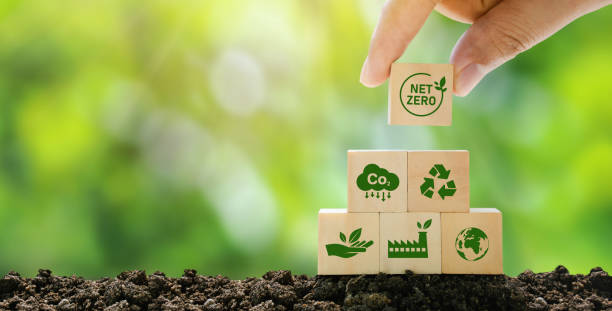DIY Upcycling Projects to Refresh Interiors and Planting Areas
Upcycling offers practical ways to refresh both indoor rooms and outdoor planting areas without buying new materials. Simple repurposing—from turning pallets into planters to converting jars into light fixtures—can improve aesthetics, support sustainability goals, and extend the life of materials while integrating basic landscaping and gardening practices.

Upcycling offers practical ways to refresh both indoor rooms and outdoor planting areas without buying new materials. Simple repurposing—from turning pallets into planters to converting jars into light fixtures—can improve aesthetics, support sustainability goals, and extend the life of materials while integrating basic landscaping and gardening practices. This article outlines project ideas and practical steps that combine upcycling with considerations like soil care, irrigation, and pollinator-friendly planting to help you renovate interior and planting spaces responsibly.
How can upcycling improve indoor spaces?
Indoor upcycling projects bring personality to rooms while reducing waste. Repurpose old furniture into storage units or seating, refinish drawer faces to create accent textures, or transform glass jars and bottles into container planters for herbs. When working indoors, consider soil choices for container plants—use a well-draining potting mix and add a thin layer of gravel for drainage when reusing containers that lack holes. Lighting can be refreshed by turning vintage glassware into pendant lights or candle holders; ensure wiring and fixtures meet safety standards and use LED bulbs for energy efficiency and reduced heat.
What upcycled ideas suit outdoor landscaping?
Outdoor landscaping benefits from sturdy, weather-resistant upcycled items. Pallets, reclaimed bricks, and broken concrete can become raised beds, edging, or simple hardscaping features. Create tiered planting from salvaged wood or convert an old wheelbarrow into a mobile container garden. For xeriscaping approaches, use crushed brick or stone from demolition projects to form permeable paths that reduce water needs. When placing upcycled materials outdoors, seal appropriate wood surfaces with non-toxic finishes and position pieces to avoid trapping excess moisture against plant roots.
How to integrate sustainability with composting and soil care?
Composting pairs naturally with upcycling because it closes the organic-loop in planting areas. Set up a simple compost bin from a repurposed wooden pallet or plastic tote; monitor carbon-to-nitrogen balance and turn regularly for aeration. Use finished compost to amend soil in containers and beds, improving nutrient content and structure. Mulch—made from shredded reclaimed wood or leaf litter—helps retain soil moisture and suppress weeds, supporting sustainability by reducing irrigation needs. Test soil periodically to guide amendments; organic matter from compost improves water retention and supports healthy perennials and annuals.
How to support pollinators and perennials with containers?
Containers made from upcycled materials can create pollinator-friendly pockets both indoors (near bright windows) and outdoors. Use old buckets, tea tins, or broken pottery as containers—ensure drainage or add a layer of gravel. Choose a mix of perennials and annuals that attract pollinators: nectar-rich flowers, native species, and staggered bloom times help provide continuous forage. Position container groupings near hardscaping elements or along pathways to create habitat corridors. Avoid pesticides and select soil mixes with sufficient organic matter to support robust blooms that pollinators prefer.
What irrigation and lighting tweaks boost plant health?
Irrigation upgrades can complement upcycled installations: convert a used rain barrel into a gravity-fed watering system for container rows, or adapt drip tubing to feed a sequence of planters made from salvaged containers. These measures conserve water and deliver moisture directly to root zones, reducing evaporation on hot days. For lighting, repurpose outdoor-rated string lights into low-voltage accents that highlight planting beds and hardscaping without stressing nocturnal pollinators. When installing any electrical fixtures, follow local safety codes and use weatherproof connectors for outdoor applications.
How to combine hardscaping, mulch, and xeriscaping effectively?
Blending hardscaping with mulch and xeriscaping principles creates resilient planting zones. Reuse pavers, bricks, or concrete fragments to build paths and edging that define planting areas; then apply organic mulch—shredded reclaimed wood or bark—to suppress weeds and conserve moisture. Arrange hardscape elements to channel rainwater toward planted zones, reducing the need for supplemental irrigation. In drier climates, choose drought-tolerant perennials and group plants by water needs to make irrigation more efficient. Regularly refresh mulch layers to maintain soil temperature and moisture levels.
Conclusion Upcycling can refresh interiors and planting areas while supporting sustainability and local landscaping goals. Thoughtful repurposing of furniture, containers, and construction leftovers, combined with composting, appropriate soil management, mindful irrigation, and pollinator-friendly planting, yields durable and attractive spaces indoors and outdoors. These projects focus on extending material life and improving plant health without relying on new purchases, producing practical benefits for both home environments and nearby ecosystems.





